
Add Water: Scratching the Surface on Irrigation

Contributor
- Topics: Drought and Fire Resilience
Fall 2022
At its simplest, landscape irrigation is a combination of how much and how frequently water should be applied. However, these are two expansive questions since landscapes are highly complex, with no two being the same. While this field of study is the subject of ongoing research and debate regarding the practice and philosophy of irrigating landscapes, gardeners can begin to apply these concepts to their own spaces. This article will scratch the surface on landscape irrigation, provide an overview of some key terms you may encounter, discuss different approaches from our research lens, and provide some takeaways you can use in your own landscape.
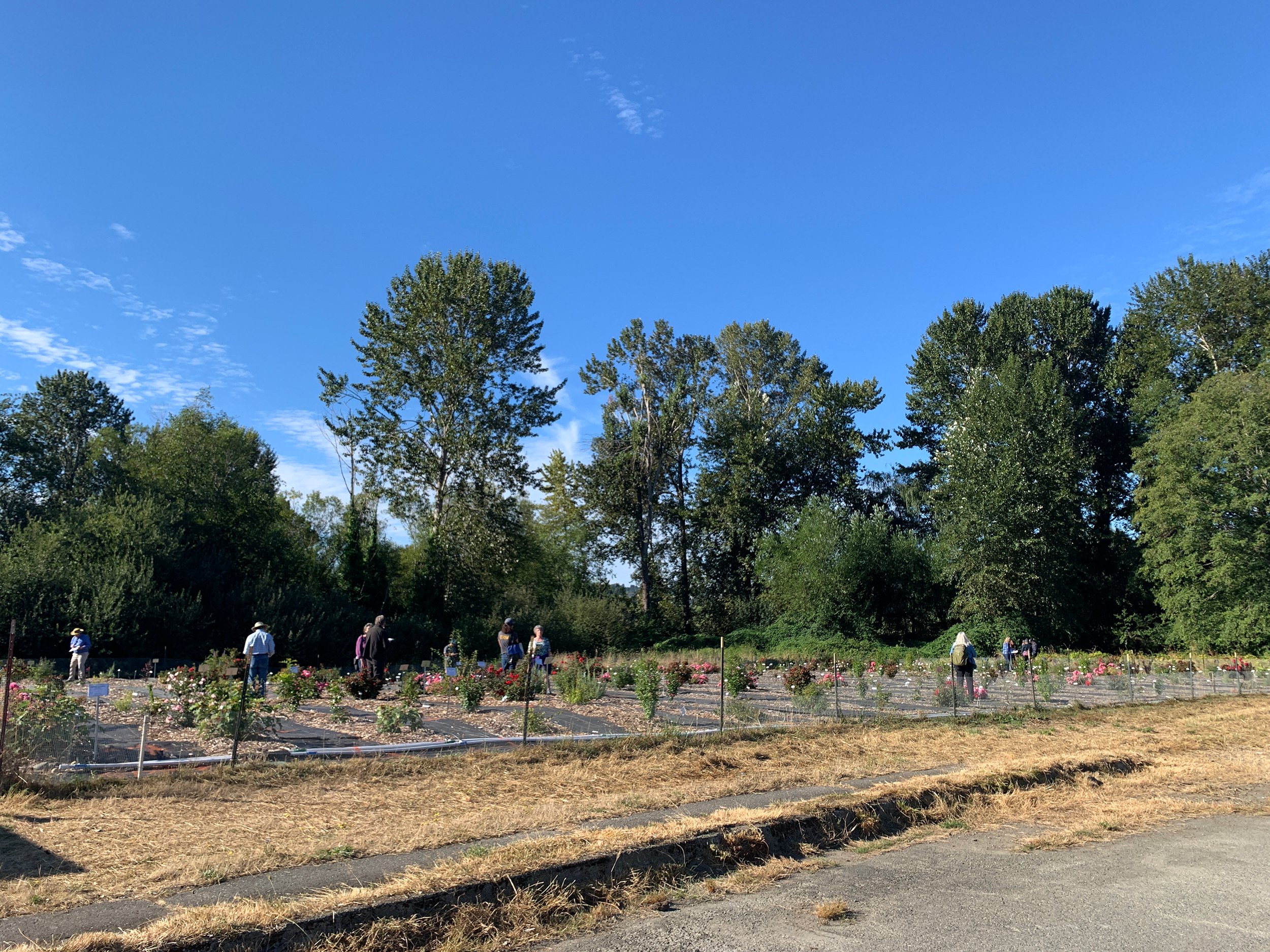
In the past, landscape irrigation was easy: the controller would turn the sprinklers on every day or so and that was it. Unfortunately, that wasn’t irrigating—that was over-irrigating. As drought and water restrictions continue, it has become increasingly important to understand how much water a landscape needs in order to apply just enough water without over-irrigating. Certain landscape features like turf grass lawns are fairly easy to irrigate, as they are typically one or two species of grass with a uniform surface and exposure to the sun. The challenging part is the rest of the landscape: mixtures of different species with differing levels of solar exposure with shading from buildings and trees result in no two landscapes being alike. To solve this puzzle, we use soil type, plants, and climate to estimate irrigation amount and frequency.
Evapotranspiration and irrigation
In the soil-plant-climate relationship, the soil holds water while plants function as a straw, removing water from the soil and releasing it into the atmosphere. This process, known as evapotranspiration (ET), is the amount of water that evaporates from soil and transpires from plants. Because agronomic crop farmers use ET to schedule their irrigations, there are networks of weather stations across the West providing accessible ET information.
There are three key takeaways to learn from ET. First, ET is reported in inches, just like rainfall (think about ET as reverse rainfall). Second, ET varies from species to species, so ET reported by weather station networks is measured from a reference species, typically cool-season turf or alfalfa, with water needs of other plants expressed as a rate in relation to the reference species. Third, ET reflects plant water need in relation to weather, so plants will typically have higher ET values in the summer when temperatures are hot and plants are actively growing, and much lower ET values in the winter when plants are not actively growing.
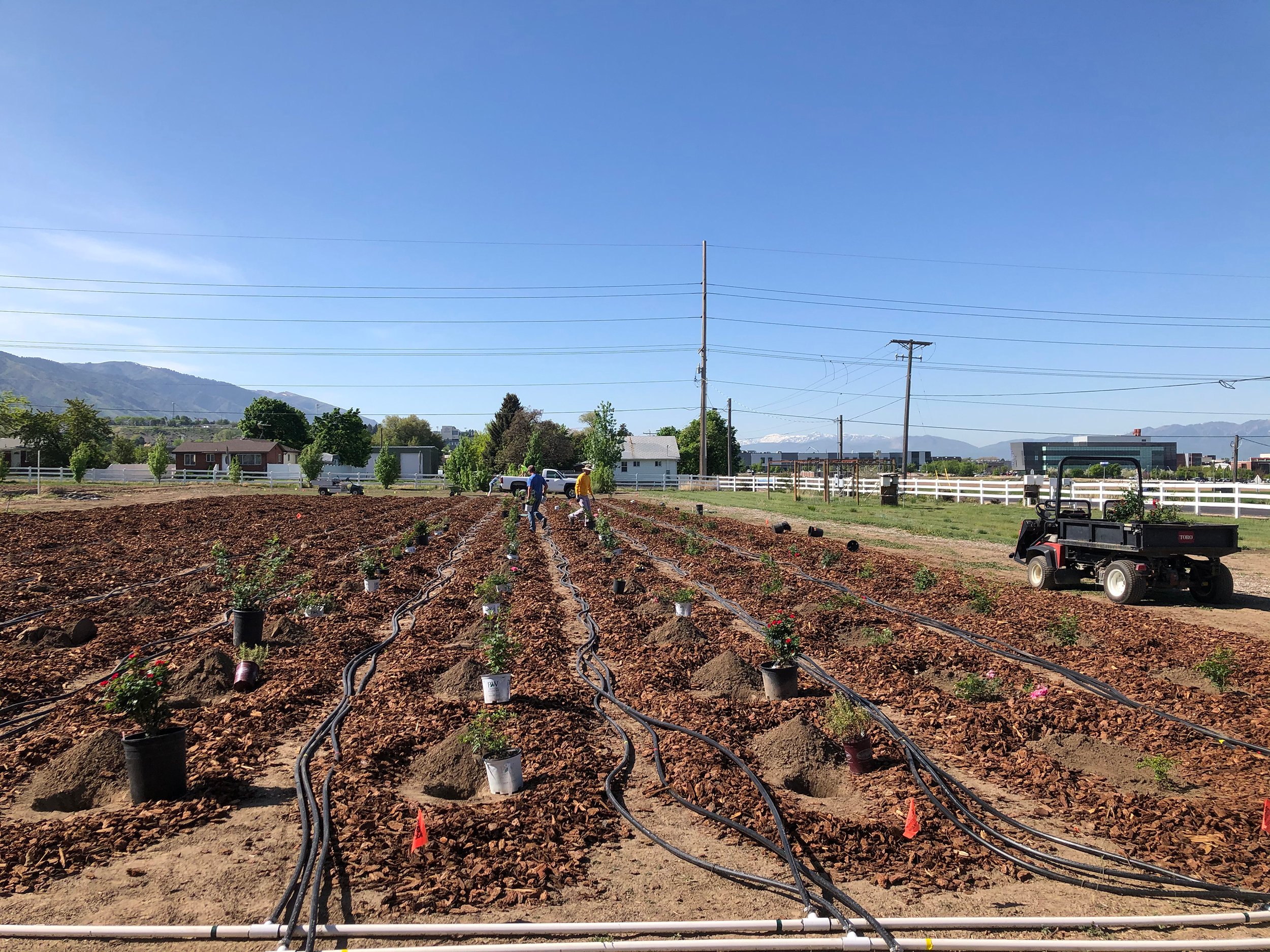
Soils are variable from region to region, with some soils holding more water than others. However, not all water held in the soil is accessible to plants. For example, while clay soils may hold more water than sandy soils, plants may not be able to use that extra water because it is held so tightly to the soil. As a result, it is important to focus on the plant available water (PAW) for a soil. This information can be obtained from SoilWeb, US Geological Survey soil survey listings, or soil sample analysis. Typical landscape practice is to irrigate when 50 percent of plant available water has been removed. So, if you want to know how much water to apply, simply divide the plant available water value in two.

[sidebar]
Takeaways for Home Gardens
Now that we’ve covered some of the basics of irrigation and different approaches, there are a few things you can do right away in a home garden.
-
Focus on ensuring you are not overwatering. Use a shovel or soil probe to check if your current irrigation cycle is filling your entire root zone at each irrigation without causing runoff.
-
Check if your current irrigation program is causing runoff. Many irrigation systems apply water to the soil faster than it can be absorbed which may go unnoticed if the controller begins irrigating in the early morning hours.
-
If runoff is occurring or you are not filling your entire root zone split the total runtime into a series of shorter pulses applied over a longer period. This will allow water to soak into the soil after each pulse, allowing your irrigation to reach deeper into the root zone while minimizing runoff.
-
Remember that more water is not better. Soils can only hold so much water—any excess will be pushed below the root zone where it is wasted because it is no longer accessible by your plants.
-
Adjust irrigation frequency as needed. In general, water demand by plants is highest in the summer, tapers off in the fall, and very little water is required in the winter. In climates with mild, wet winters—like Davis—rainfall can replace an irrigation schedule, though in drought years with inconsistent rainfall, winter irrigations may be needed.
-
Lastly, group plants with like irrigation needs together. Plants considered low water use or drought tolerant need to be fully established and rooted into the native soil.
Next, we’ll cover how to create a basic irrigation schedule using these methods.
[/sidebar]
Now we know how much water the soil can hold and, with ET, how quickly it is being removed from the reference crop. The last part of the equation is the plants, which is where our trial comes in—we test plants on three different levels of irrigation to identify the lowest amount of water a plant will need without compromising aesthetic value. This is when we determine frequency—because ET is expressed as a rate in relation to the reference plant, if you know what percentage of ET your plants use, you can track ET to determine when 50 percent of your plant available water has been removed. This weather-based irrigation protocol increases and decreases irrigation frequency in response to changing seasons and, in the longer term, warmer and cooler years. This approach is more efficient than a time-based protocol, such as irrigating with a set number of days between each irrigation throughout the whole year. With advances in technology, it is now possible to purchase a weather-based irrigation controller.
Approaches to irrigation
Now that we’ve covered the basics, let’s cover some of the different approaches related to interpreting ET and applying water. In our trials, we apply the same amount of water at each irrigation for each treatment while varying how frequently the treatments are watered. So, our High treatment (80 percent of ET) is watered more frequently than our Low treatment (20 percent of ET), and receives more water over the course of the irrigation season. This protocol also allows us to draw down and refill the PAW in our wetted soil area, with this cycling suiting the growth patterns of many plants.
In the scientific literature, there have been studies that modify the amount of water applied, rather than the frequency. One concern with this approach is that plants may be unduly stressed, with the lowest treatment always being low on water. In other words, this approach is similar to always driving a car with an empty tank and just adding a gallon or so every few trips, which can work but would be quite limiting.
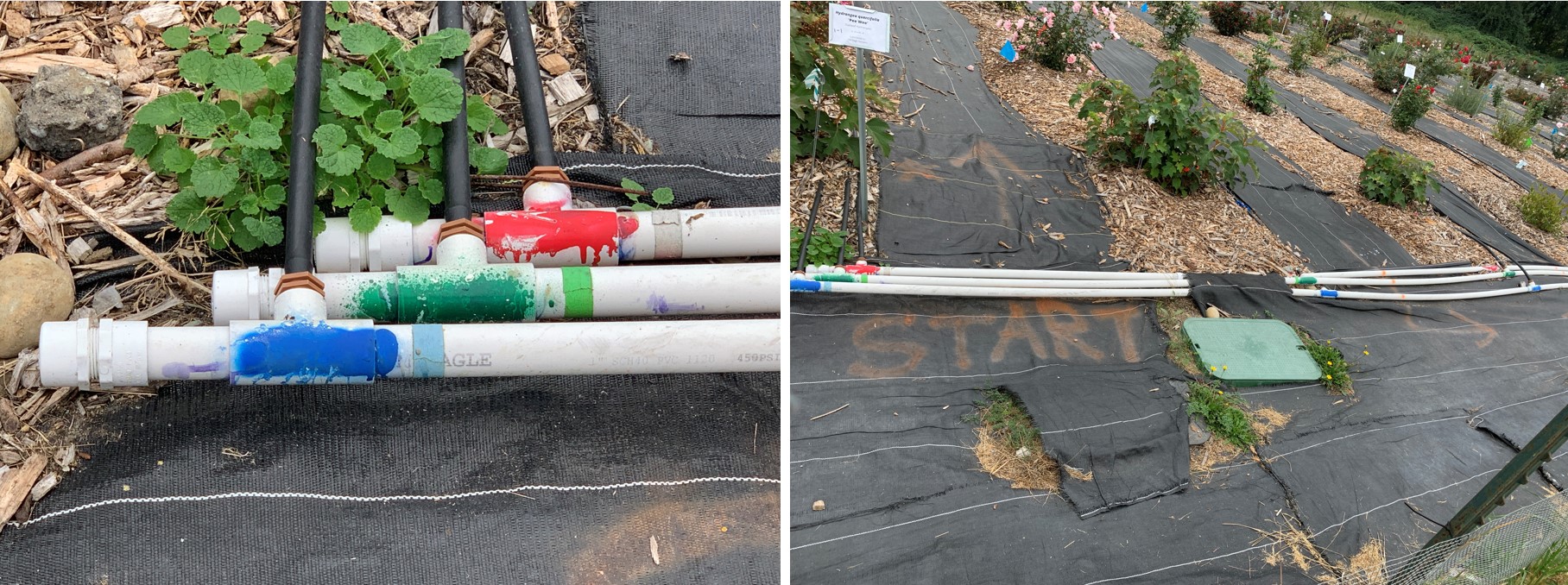
Right: UW irrigation system wide shot Seattle. Photo: Erica Browne Grivas
Plant factors, or the rate that a plant uses water relative to the reference crop, is a second area where there are different approaches specifically regarding the use of species-specific plant factors versus broad, categorical plant factors. The American Society of Agricultural and Biological Engineers advocates for a simplified approach for irrigating landscapes in a guide known as the Simplified Landscape Irrigated Demand Estimation (SLIDE) Rules. This includes only using a few universal plant factors based on plant type, such as turf or woody plants, and geographical location of the site being in either a dry or humid climate.
We take a different position, arguing that plant factors at a species level are necessary due to variations between plants of a given plant type. For example, we have found some roses perform well at 20 percent of ET while others perform better at 50 percent of ET. Furthermore, our previous testing found plants of all types, from woody plants to grasses, perform well on our Low treatment (20 percent of ET), which is lower than the SLIDE Rule’s “Desert Plants” category at 30 percent of ET. However, we only test plants as individuals spaced two meters apart in a field study. While we assume these recommendations will apply to landscape settings, we have not tested this hypothesis.
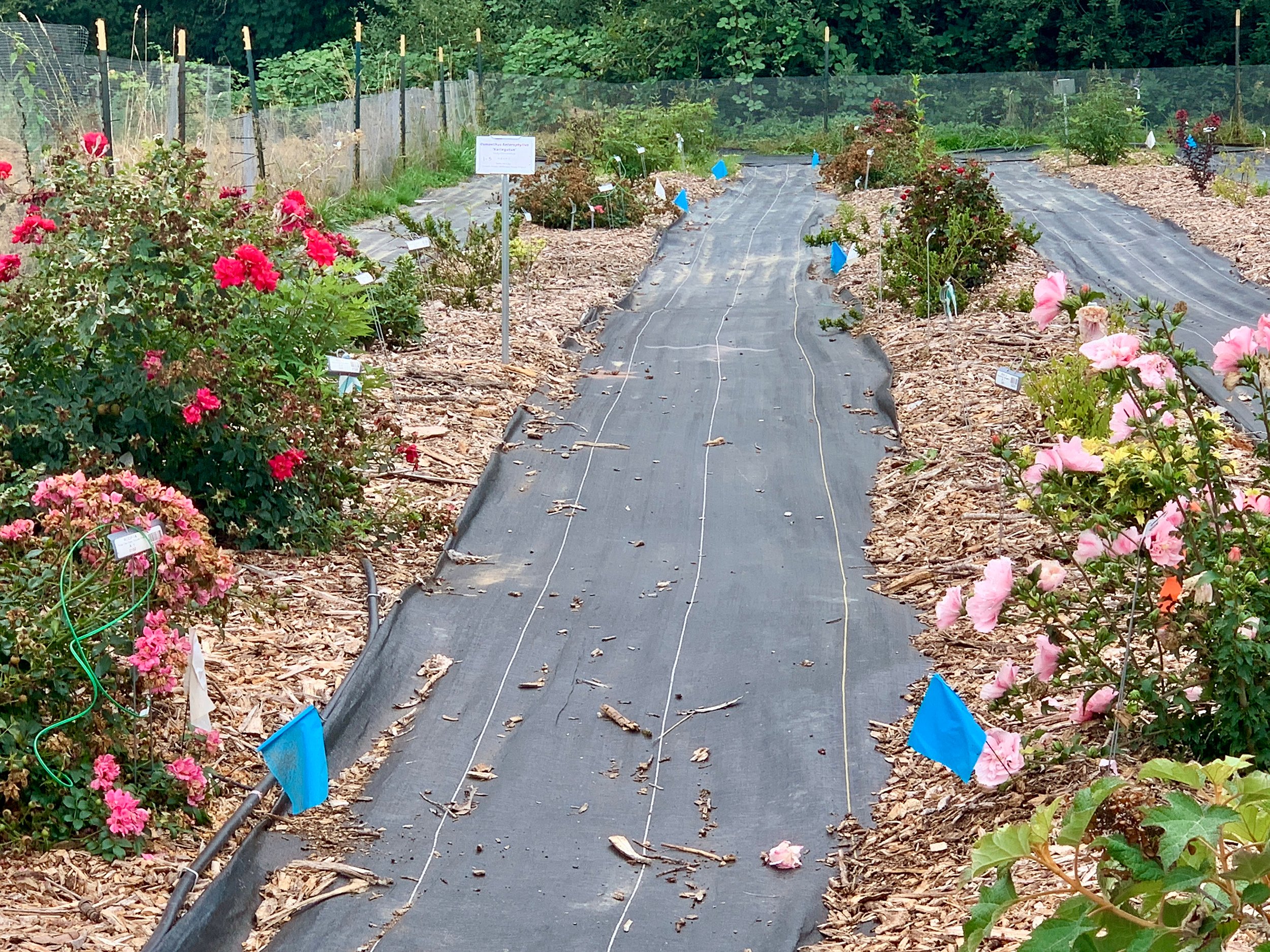
This content was made possible in part by The Saratoga Horticultural Research Endowment (SHRE).
Share:
Social Media
Garden Futurist Podcast
Most Popular
Videos
Topics
Related Posts
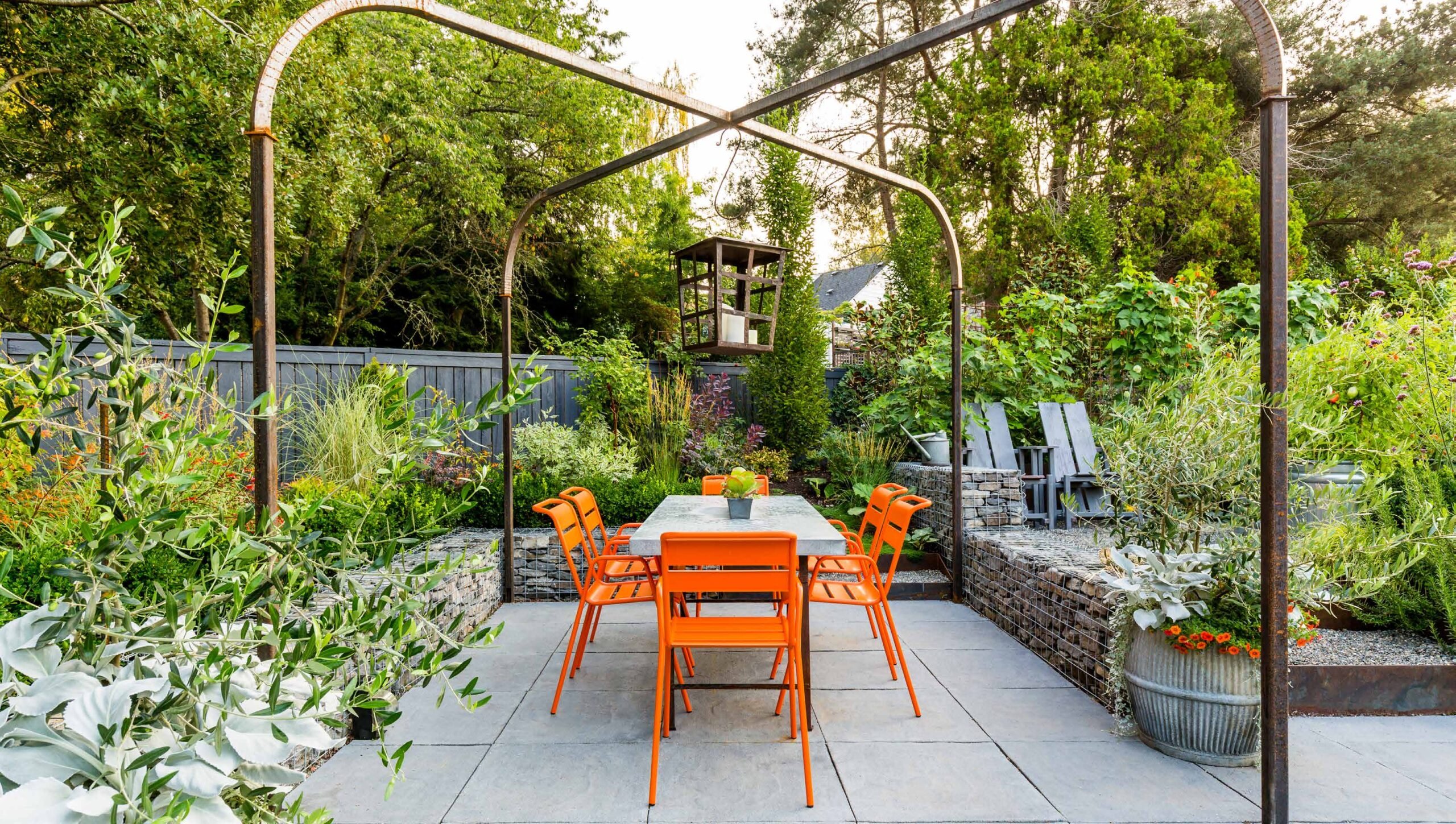
Design Futurist Award Announced: Committee Shares Vision
March 8, 2023 At Pacific Horticulture, we believe that beauty can be defined not only by gorgeous plants and design, but also by how gardens
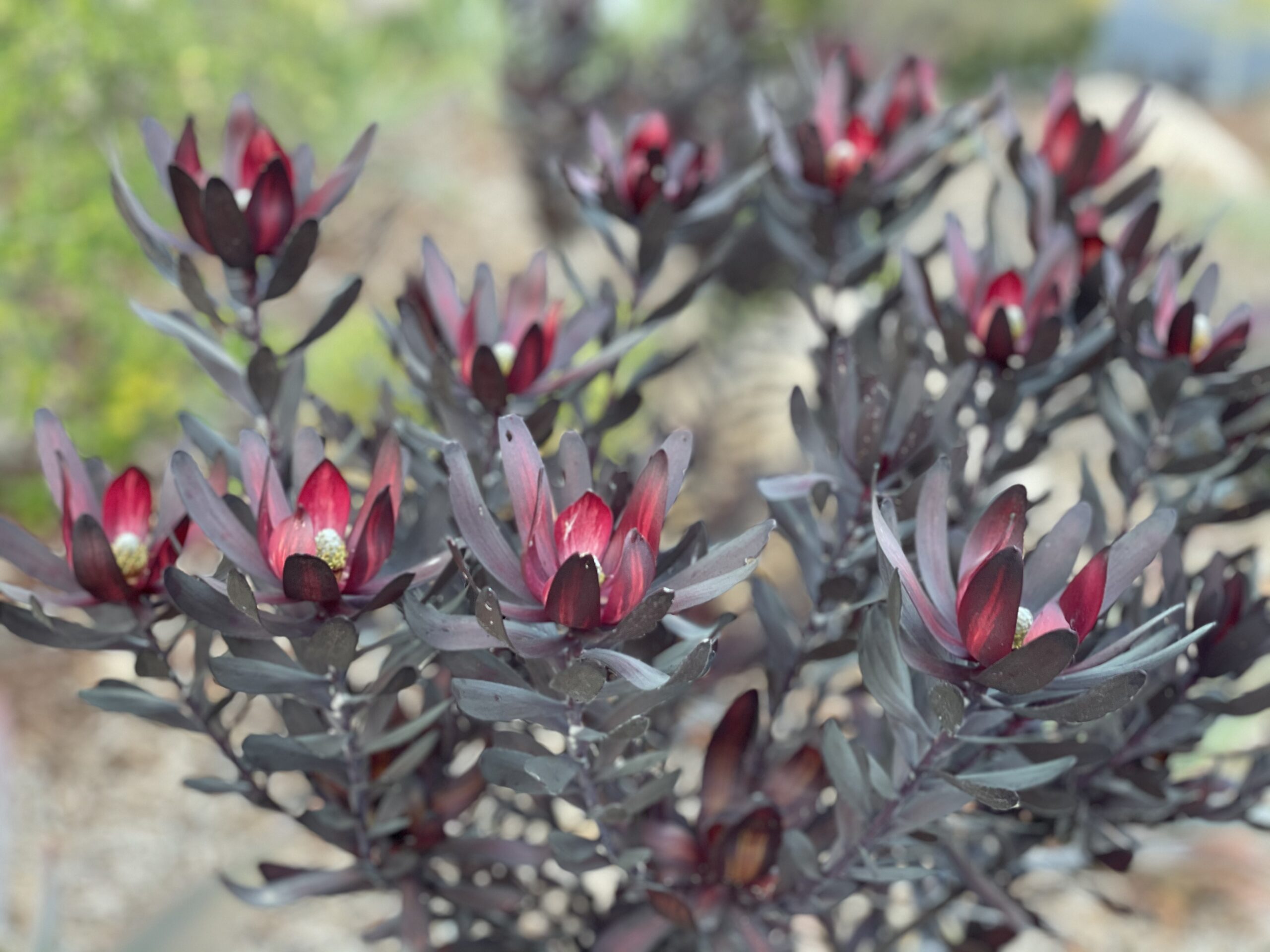
Expand Your Palette: Waterwise Plants for your Landscape
There’s nothing more thrilling to plant lovers than discovering new plants to test in the garden. Here in the southernmost corner of California, we have
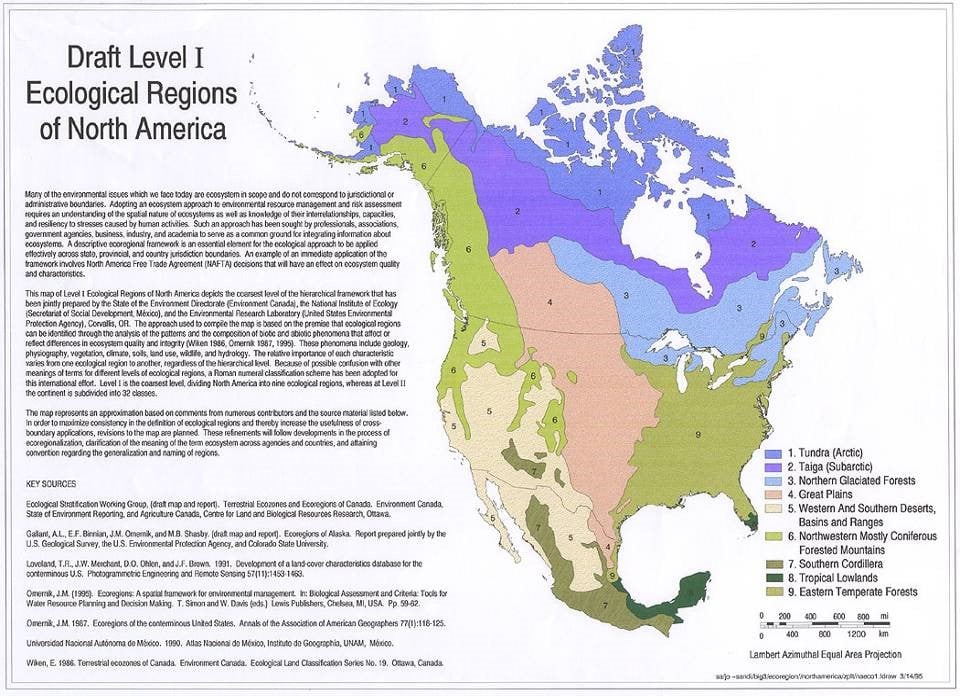
What Climate is This? Part Two – A Garden Futurist Special
Winter 2022 Listen to the Part 2 Podcast here. If you live in the Pacific region, you know that seasons in your garden look different

Portland Parks’ “Nature Patches”
Winter 2022 Nature is so beautiful when left to its own devices, yet crisply manicured lawns remain a status symbol. This is true in Portland,










Responses